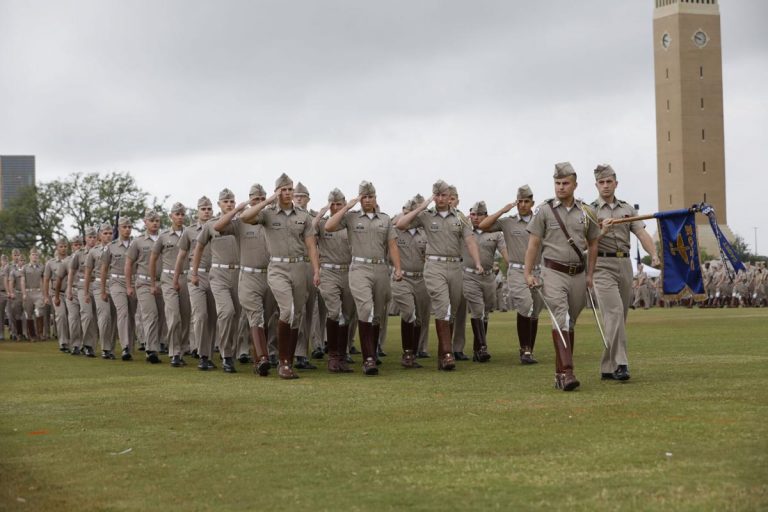Aerospace Engineering TAMU Requirements
Aerospace Engineering TAMU Requirements: At the intersection of innovation, design, and exploration lies the dynamic field of aerospace engineering. Institutions worldwide have been instrumental in shaping the trajectory of this discipline, and Texas A&M University (TAMU) stands out as a beacon of excellence. With its robust curriculum, world-renowned faculty, and state-of-the-art facilities, TAMU’s Aerospace Engineering program pushes the boundaries of human understanding. It grooms its students to be the torchbearers of the next generation of aerospace pioneers.School news portal
Diving deep into the heart of Texas, College Station is home to TAMU, a university that traces its rich legacy back to 1876. Over the decades, TAMU has championed countless innovations across many fields, and aerospace engineering is no exception. The university’s commitment to propelling forward-thinking research, coupled with its emphasis on real-world applications, makes its aerospace program a coveted destination for aspiring engineers from around the globe. The program attracts exceptionally talented candidates each year, eager to make their mark in the skies and beyond.
However, securing a seat in this prestigious program isn’t straightforward. As one would expect from an institution of TAMU’s stature, the admission criteria for its aerospace engineering program are rigorous, aiming to sieve out only the most committed and capable candidates. This article sheds light on the exact requirements and the multifaceted components aspiring students must know when charting their course towards a future at TAMU’s Aerospace Engineering department.
Read Also: Tamu Q-Drop Deadline 2023
Overview of the Aerospace Engineering Program at TAMU
Texas A&M University, located in College Station, Texas, has a long-standing tradition of excellence in engineering education. The aerospace engineering program at TAMU, under the Dwight Look College of Engineering, is consistently ranked among the top programs in the country.Aerospace Engineering TAMU Requirements
The curriculum is designed to give students a solid foundation in engineering principles and specialized knowledge in aerospace systems and technologies. Students undergo rigorous training in aerodynamics, propulsion systems, flight dynamics, structural analysis, and spacecraft design. The program also emphasizes hands-on experience, ensuring graduates are prepared for real-world challenges in the aerospace industry.
Read Also: Change of major requirements Tamu
Admission Requirements for the Aerospace Engineering Program
Admission to the aerospace engineering program at TAMU is competitive. Prospective students are expected to meet the following requirements:
- High School Record: Applicants should have a solid academic record, particularly in mathematics and science courses. Courses in calculus, physics, and chemistry are especially relevant.
- Standardized Tests: SAT or ACT scores are typically required for admission. Although minimum scores vary by year, successful applicants generally have scores above the national average.
- Recommendation Letters: Some applicants may be required or choose to submit recommendation letters. These letters should ideally come from teachers or mentors familiar with the applicant’s academic abilities and potential for success in the engineering field.
- Extracurricular Activities: Participation in relevant extracurricular activities, such as robotics clubs, science fairs, or math competitions, can strengthen an application. Leadership roles in these activities are precious.
- Personal Statement: A well-written personal statement can give the admissions committee insight into the applicant’s passion for aerospace engineering and their potential contributions to the TAMU community.
Read Also: How to Change Your Major at TAMU
Other Essential Considerations
- Transfer Students: Students transferring from another college or university are also welcome to apply. Transfer students should have a strong academic record in their previous institutions, especially in courses relevant to engineering.
- International Students: International applicants might have additional requirements, including proof of English proficiency through exams like TOEFL or IELTS.
- Financial Aid and Scholarships: Prospective students are encouraged to explore financial aid options and scholarships. TAMU offers several scholarships specifically for engineering students.
Program Requirements and Curriculum
Once admitted to the aerospace engineering program at TAMU, students will embark on a journey that combines theory with practical application. Some essential requirements and courses in the program include:
- Foundation Courses: Students must complete foundational mathematics, physics, and engineering mechanics courses.
- Core Aerospace Courses: Core courses include aerodynamics, propulsion, aerospace materials, flight dynamics, and control systems.
- Laboratory Work: Practical laboratory sessions allow students to apply theoretical knowledge. Labs focus on wind tunnel testing, propulsion system analysis, and more.
- Design Projects: Students typically engage in design projects in their senior year, allowing them to conceptualize, design, and test aerospace systems in a team-based environment.
- Electives: The program offers several electives, enabling students to delve deeper into areas of interest, such as unmanned aerial vehicles, orbital mechanics, or renewable energy for aerospace applications.
Read Also: Transfer Course Equivalency TAMU Requirements
Career Prospects for Graduates
Graduates of the aerospace engineering program at TAMU are well-equipped for careers in the aerospace industry, including roles with major aerospace manufacturers, airlines, space agencies, and research institutions. The program’s emphasis on theoretical knowledge and practical experience ensures that graduates are ready for the challenges of modern aerospace engineering.
Furthermore, the aerospace industry isn’t the only avenue for graduates. The skills and knowledge acquired can be applied to the automotive, energy, and defence industries. Additionally, some graduates choose to continue their education, pursuing master’s or doctoral degrees in aerospace engineering or related fields.
Read Also: Tamu Admissions Requirements GPA
Conclusion
Texas A&M University offers a robust aerospace engineering program combining theoretical learning and hands-on experiences. For those passionate about the wonders of flight and space exploration, TAMU’s aerospace engineering program is a launching pad for a rewarding career in the industry. By meeting the requirements and immersing oneself in the program, students pave the way for a future of innovation and discovery in air and space.

